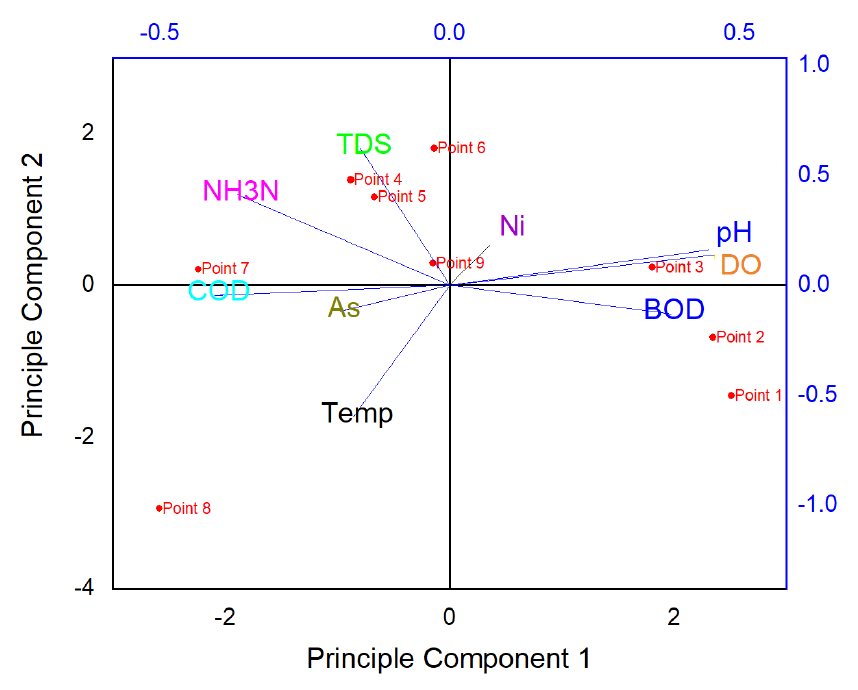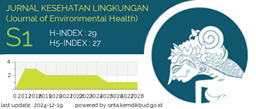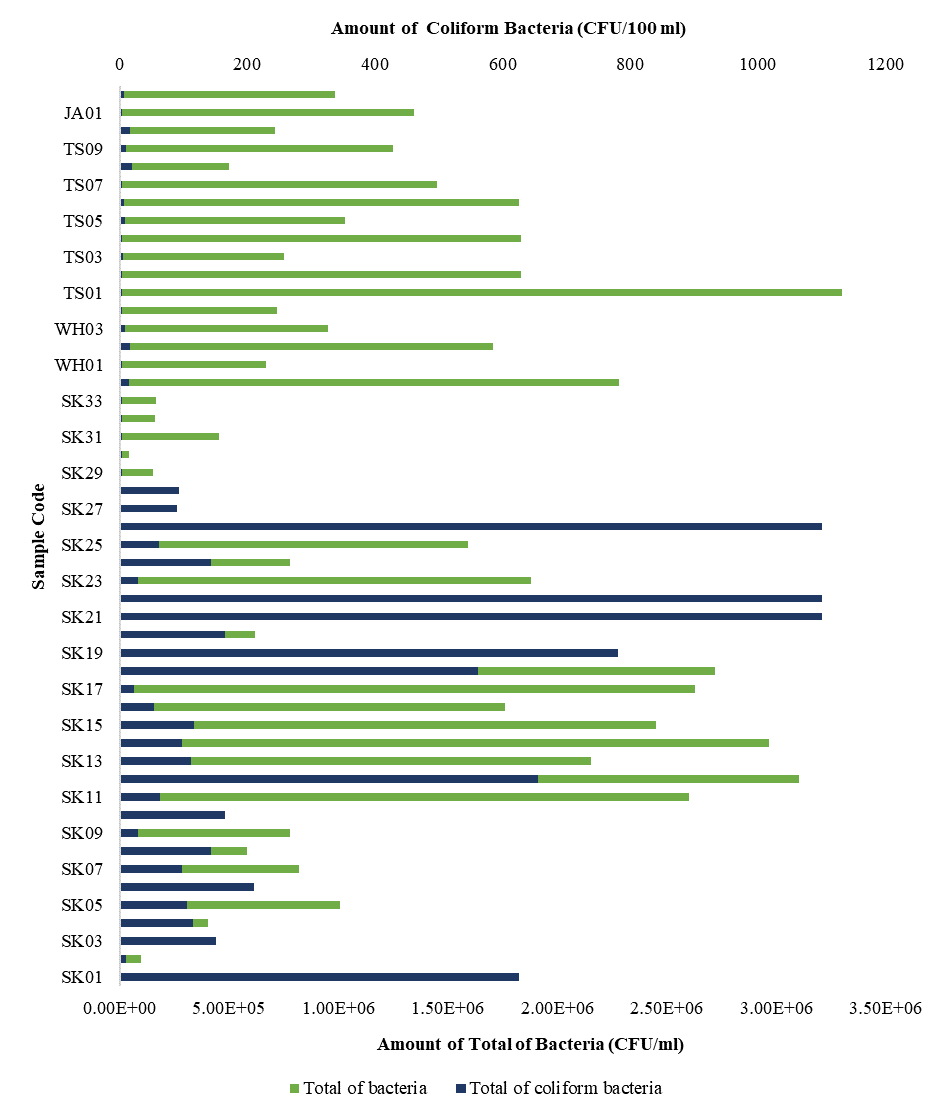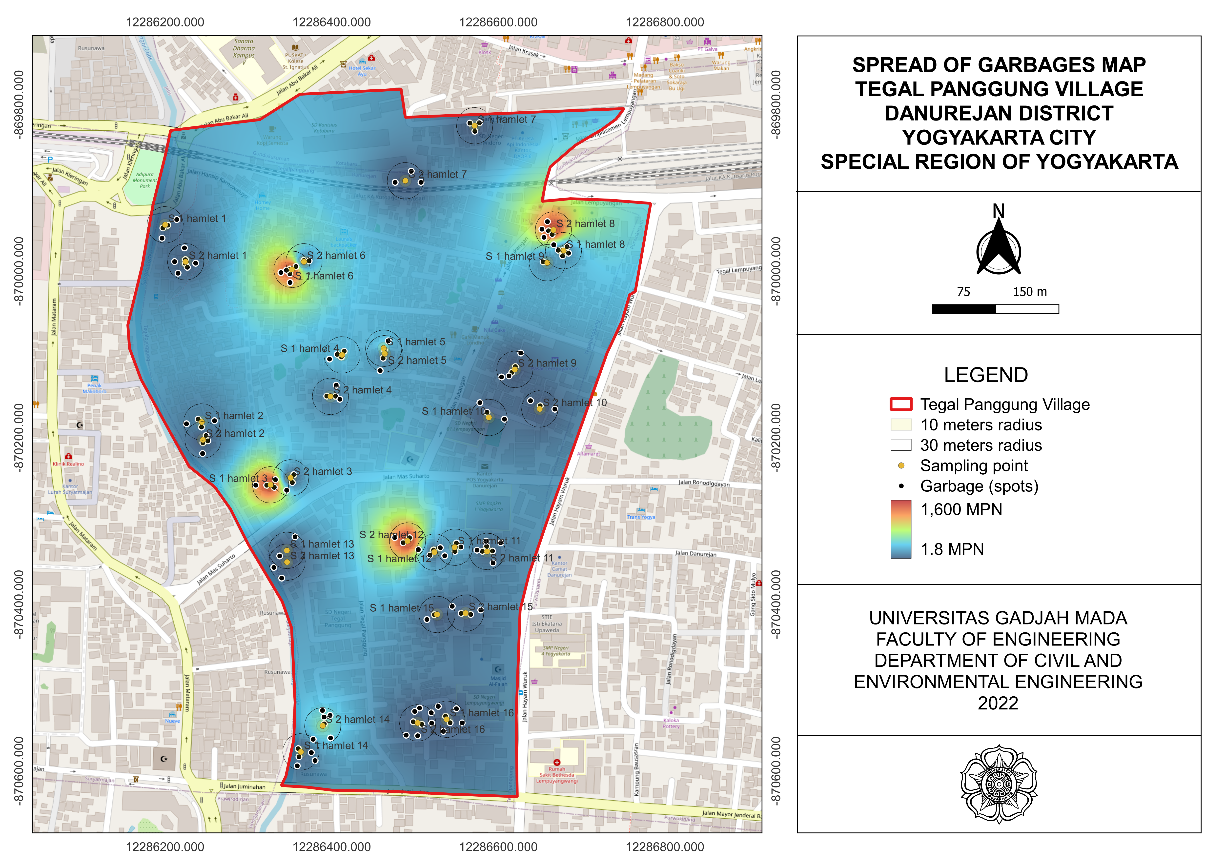Klang River Water Quality Assessment and Its Effects on Human Health Using Chemometric Analysis

Introduction: River water pollution has been a significant hazard to human health and is associated with severe health risks. This study evaluates water quality and heavy metal levels in the Klang River, analyzing their health risks through chemometric analysis. Methods: Inductively Coupled Plasma-Mass Spectrometry (ICP-MS) was used to analyse the heavy metal contents in river water samples obtained from 9 sampling stations. Chemometric statistical techniques (principal component analysis (PCA) and hierarchical cluster analysis (HCA)) are employed to identify the sources of physicochemical properties and heavy metals. The human health risk was evaluated using statistical analysis, apart from hazard quotient (HQ), hazard index (HI), and carcinogenic risk (CR). Results and Discussion: Results showed that the physicochemical parameters were within acceptable limits. The concentration of heavy metals was found to follow a decreasing order of As > Ni below permissible levels, except at P9 and P8. PCA and HCA showed important connections among parameters, emphasizing that COD, NH3N, and TDS are key factors affecting Klang River water quality. Conclusion: The study assesses pollution risks in the Klang River, offering crucial insights for sustainable estuary management. It highlights significant changes in temperature, pH, TDS, BOD, DO, and NH3N levels, along with specific trends in heavy metal concentrations. The Health Risk Assessment indicates acceptable HQ and Target Cancer Risk values. However, the study's limited sample sites and focused timeframe might hinder understanding long-term patterns and regional differences. Extended data collection and additional information are necessary to improve water quality management and protect public health
Koki IB, Bayero AS, Umar A, Yusuf S. Health Risk Assessment of Heavy Metals in Water, Air, Soil and Fish. African Journal of Pure and Applied Chemistry. 2015;9(11):204-210. https://doi.org/10.5897/AJPAC2015.0654
Rahman A, Jahanara I, Jolly YN. Assessment of Physicochemical Properties of Water and Their Seasonal Variation in an Urban River in Bangladesh. Water Science and Engineering. 2021;14(2):139-148. https://doi.org/10.1016/j.wse.2021.06.006
Obaideen K, Shehata N, Sayed ET, Abdelkareem MA, Mahmoud MS, et al. The Role of Wastewater Treatment in Achieving Sustainable Development Goals (SDGs) and Sustainability Guideline. Energy Nexus. 2022;7(100112):1-19. https://doi.org/10.1016/j.nexus.2022.100112
Ahmed MF, Lim CK, Mokhtar M, Khirotdin RPK. Predicting Arsenic (As) Exposure on Human Health for Better Management of Drinking Water Sources. International Journal of Environmental Research and Public Health. 2021;18(15):7997. https://doi.org/10.3390/ijerph18157997
Bashir I, Lone FA, Bhat RA, Mir SA, Dar ZA, Dar SA. Concerns and Threats of Contamination on Aquatic Ecosystems (Bioremediation and Biotechnology). Berlin : Springer Cham; 2020. p 1-26. https://doi.org/10.1007/978-3-030-35691-0_1
Inyinbor AO, Adebesin BO, Oluyori AP, Adelani-Akande TA, Dada AO, et al. Water Pollution: Effects, Prevention, and Climatic Impact. Water Challenges of an Urbanizing World. 2018;33. p 33-47. https://doi.org/10.5772/intechopen.72018
Camara M, Jamil NR, Abdullah AF. Impact of Land Uses on Water Quality in Malaysia: A Review. Ecological Processes. 2019;8(1). p 10. https://doi.org/10.1186/s13717-019-0164-x
Rajan S, Nandimandalam JR. Environmental Health Risk Assessment and Source Apportion of Heavy Metals using Chemometrics and Pollution Indices in the Upper Yamuna River Basin, India. Chemosphere. 2024;346(140570):1-16. https://doi.org/10.1016/j.chemosphere.2023.140570
Othman F, Eldin MEA, Mohamed I. Trend Analysis of A Tropical Urban River Water Quality in Malaysia. Journal of Environmental Monitoring. 2012;14(12):3164-3173. https://doi.org/10.1039/c2em30676j
Ali NFM, Mohamed I, Mohamad Yunus R, Othman F. Assessment of Water Quality Data Using Functional Data Analysis for Klang River Basin, Malaysia. Research Square. 2023;1(1):1-24. https://doi.org/10.21203/rs.3.rs-2778529/v1
Zin MSM, Juahir H, Toriman ME, Kamarudin MKA, Wahab NA, et al. Assessment of Water Quality Status using Univariate Analysis at Klang and Juru River, Malaysia. Journal of Fundamental and Applied Sciences. 2018;9(2S):93-108. https://doi.org/10.4314/jfas.v9i2s.7
Ashraf MA, Hussin NH, Yusoff I, Gharibreza M. Study of the Impacts of Some Domestic Pollutants on the Freshwater Fish Community in the Klang River, Malaysia. Earth Sciences Malaysia. 2017;1(1):1-7. https://doi.org/10.26480/esmy.01.2017.01.07
Najah A, Teo FY, Chow MF, Huang YF, Latif SD, et al. Surface Water Quality Status and Prediction During Movement Control Operation Order Under Covid-19 Pandemic: Case Studies in Malaysia. International Journal of Environmental Science and Technology. 2021;18(4):1009-1018. https://doi.org/10.1007/s13762-021-03139-y
Sarkodie SA, Owusu PA. Impact of Covid-19 Pandemic on Waste Management. Environment. Development and Sustainability. 2021;23(5):7951-7960. https://doi.org/10.1007/s10668-020-00956-y
Buzzi NS, Menendez MC, Truchet DM, Delgado AL,. Severini MDF. An Overview on Metal Pollution on Touristic Sandy Beaches: is the Covid-19 Pandemic an Opportunity to Improve Coastal Management?. Marine Pollution Bulletin. 2022;174(113275):1-14. https://doi.org/10.1016/j.marpolbul.2021.113275
Sharif SM, Kusin FM, Asha'ari ZH, Aris AZ. Characterization of Water Quality Conditions in the Klang River Basin, Malaysia Using Self Organizing Map and K-means Algorithm. Procedia Environmental Sciences. 2015;30(1):73-78. https://doi.org/10.1016/j.proenv.2015.10.013
Manaff AINA, Muhammad NS, Abdullah J. Multivariate Statistical Assessment of Klang River, Selangor, Malaysia. IOP Conference Series: Earth and Environmental Science. 2020;476(1): 012121. https://doi.org/10.1088/1755-1315/476/1/012121
Rice EW, Baird RB, Eaton AD. Standard Methods for the Examination of Water and Wastewater 23rd Edition. Washington DC: American Public Health Association; 2017.
Nasir M, Iqbar, Munira, Muchlisin ZA, Suhendrayatna, et al. Investigation of Heavy Metals in River Water, Sediments, and Fish in Krueng Geumpang, Pidie Regency, Aceh Province. Journal of Advanced Research in Fluid Mechanics and Thermal Sciences. 2020;75(1):81-93. https://doi.org/10.37934/arfmts.75.1.8193
Baharudin F, Kassim J, Imran SNM, Wahab MA. Water Quality Index (WQI) Classification of Rivers in Agriculture and Aquaculture Catchments. IOP Conference Series: Earth and Environmental Science. 2021;646(1):012023. https://doi.org/10.1088/1755-1315/646/1/012023
Park YM, C21. hoi JY, Nho EY, Lee CM, Hwang IM, et al. Determination of Macro and Trace Elements in Canned Marine Products by Inductively Coupled Plasma”Optical Emission Spectrometry (ICP-OES) and ICP”Mass Spectrometry (ICP-MS). Analytical Letters. 2019;52(6):1018-1030. https://doi.org/10.1080/00032719.2018.1510938
Alidadi H, Sany SBT, Oftadeh BZG, Mohamad T, Shamszade H, et al. Health Risk Assessments of Arsenic and Toxic Heavy Metal Exposure in Drinking Water in Northeast Iran. Environmental Health and Preventive Medicine. 2019;24(59):1-17. https://doi.org/10.1186/s12199-019-0812-x
Cogliano VJ, Baan R, Straif K, Grosse Y, Lauby. Secretan B, et al. Preventable Exposures Associated with Human Cancers. Journal of the National Cancer Institute. 2011;103(24):1827-1839. https://doi.org/10.1093/jnci/djr483
Guglielmi D, Paolucci A, Cozzani V, Mariani MG. Pietrantoni L, et al. Integrating Human Barriers in Human Reliability Analysis: A New Model for the Energy Sector. International Journal of Environmental Research and Public Health. 2022;19(05):2797. https://doi.org/10.3390/ijerph19052797
Yap CK, Saleem M, Tan WS, Syazwan WM, Azrizal. Wahid N, et al. Ecological-Health Risk Assessments of Copper in the Sediments: A Review and Synthesis. Pollutants. 2022;2(3):269-288. https://doi.org/10.3390/pollutants2030018

This work is licensed under a Creative Commons Attribution-NonCommercial-ShareAlike 4.0 International License.
1. Copyright of all journal manuscripts is held by the Jurnal Kesehatan Lingkungan.2. Formal legal provisions to access digital articles of electronic journal are subject to the provision of the Creative Commons Attribution-ShareAlike license (CC BY-NC-SA), which means that Jurnal Kesehatan Lingkungan is rightful to keep, transfer media/format, manage in the form of databases, maintain, and publish articles.
3. Published manuscripts both printed and electronic are open access for educational, research, and library purposes. Additionally, the editorial board is not responsible for any violations of copyright law.
JKESLING by UNAIR is licensed under a Creative Commons Attribution-ShareAlike 4.0 International License.







































